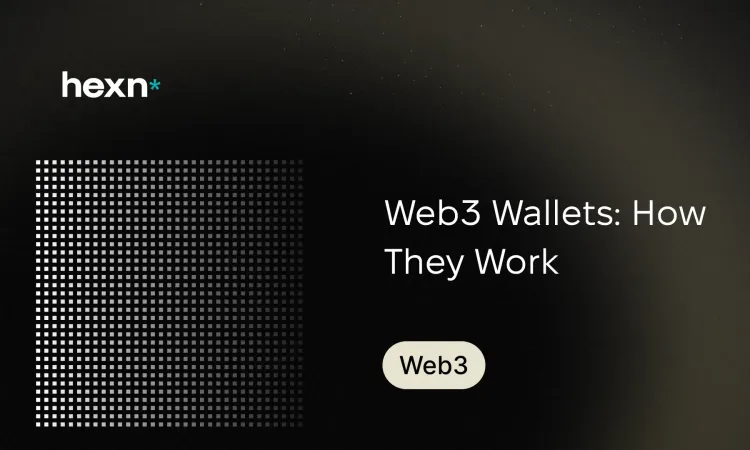Web3 Wallets: How They Work
What Is a Web3 Wallet?
Web3 wallets are the tools people use to access blockchains and decentralized applications. They let you hold, send, and receive digital tokens and NFTs, and they enable interactions with decentralized finance services. For anyone exploring crypto or DeFi, a wallet is the gateway that makes on‑chain activity possible.
How Web3 Wallets Work
At their core, Web3 wallets manage cryptographic keys that prove ownership of on‑chain assets. Most wallets generate a seed phrase—a set of words that can recreate your private keys. Whoever controls those keys controls the funds. That’s why wallets either give you full control over keys or delegate key management to a third party.
When you sign a transaction in a Web3 wallet, the wallet uses your private key to create a digital signature that the blockchain verifies. Wallets do not store your tokens themselves; they store the keys that authorize transactions on the blockchain.
Essential Features
Wallets vary, but several features are commonly important:
- Multi‑asset and multi‑chain support: Many wallets handle tokens across different blockchains and let you manage NFTs alongside cryptocurrencies.
- DeFi and smart contract compatibility: A Web3 wallet should let you connect to decentralized apps, interact with smart contracts, and use decentralized exchanges.
- Peer‑to‑peer transfers: Wallets enable sending and receiving assets directly between addresses without intermediaries.
- Security tools: Look for encryption, warnings about risky sites or contracts, and optional advanced protections like multi‑signature setups.
- Pseudonymity: Wallets typically don’t require personal information to create an address, although on‑chain activity is public.
Custodial vs Non‑Custodial Wallets
One of the first choices is between non‑custodial and custodial wallets. Non‑custodial wallets give you sole possession of your private keys and the corresponding responsibility to back them up securely. Many experienced users prefer this model for the autonomy it offers.
Custodial wallets place key management in the hands of a service provider, which can simplify access and recovery but requires trust in that third party. Both approaches have tradeoffs between convenience and control.
Common Types of Web3 Wallets
Wallets come in several form factors. Below are the most common types and what they’re best suited for.
Hardware Wallets
Hardware wallets are dedicated devices that store private keys offline. Because they keep keys away from internet‑connected devices, they reduce exposure to hackers. They’re ideal for larger balances or long‑term holdings, though they add extra steps to everyday use.
Web and Browser Extension Wallets
Browser‑based wallets integrate with websites and make connecting to decentralized apps straightforward. They’re popular for trading, swapping tokens, and other active DeFi tasks. Convenience is high, so be cautious about which sites you approve to access your wallet.
Mobile Wallets
Mobile wallets put your keys on a smartphone app and are useful for quick payments, scanning QR codes, and interacting with mobile DApps. They balance usability and portability, but the security depends on how well the phone is protected from malware and theft.
Desktop Wallets
Desktop wallets run as applications on your computer and often provide advanced controls. Security is tied to your computer’s integrity, so keep the system updated and back up wallet data.
Paper Wallets
Paper wallets involve writing or printing keys and storing the paper securely. They avoid online risks but are vulnerable to physical damage, loss, or theft and are generally less practical for regular use.
Smart Contract Wallets
Smart contract wallets are accounts governed by on‑chain code rather than a single private key. They can add features like multi‑signature approval, spending limits, social recovery, and automated workflows, making them attractive for advanced users and teams.
Examples of Popular Wallet Approaches
There are many wallets on the market. Non‑custodial mobile and browser wallets are widely used for everyday DeFi access. Some services also offer wallets that use multi‑party computation (MPC) techniques to split key control across multiple locations, combining convenience with stronger cryptographic protections. Hardware wallets remain the go‑to for secure cold storage, while smart contract wallets provide programmable protections for more complex needs.
Security Tips for Managing Any Web3 Wallet
- Never share your seed phrase or private keys. Treat them like the keys to a safe.
- Create offline backups of recovery phrases and store them in secure locations.
- Use hardware wallets for significant holdings and enable multi‑signature setups when available.
- Double‑check addresses before sending funds and be wary of phishing sites or malicious smart contracts.
- Keep software up to date and consider separate devices for large‑value transactions.
How to Choose the Right Web3 Wallet
Selecting a wallet depends on your priorities. If you want maximum control and privacy, a non‑custodial wallet combined with hardware backup is a strong choice. If convenience and easy recovery matter more, custodial or MPC‑based solutions can simplify access. For programmable security and shared control, smart contract wallets are worth exploring. Whichever path you take, prioritize understanding key management and backup procedures.
Next Steps
Begin by identifying the features that matter most—security, convenience, or advanced programmability. Try a reputable non‑custodial mobile or browser wallet to experiment with DApps, and consider a hardware wallet once you hold meaningful value. Always follow best practices for backups and security to reduce the risk of loss.
